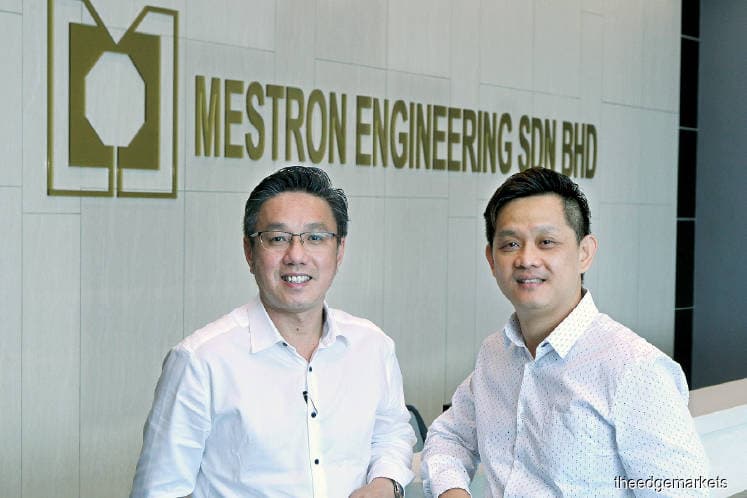
This article first appeared in The Edge Financial Daily on June 3, 2019
KUALA LUMPUR: Now may not be the most ideal time for a small-capitalisation company to go for listing, as the market tend to be volatile, buffeted by uncertainties. But ACE Market-bound Mestron Holdings Bhd is unfazed as it keeps its eyes on the prize.
Its plan to double production capacity using funds from the initial public offering (IPO) stemmed from a lesson the group learnt from the past, executive director Gary Loon Chin Seng told The Edge Financial Daily.
“Before moving to our current facility in 2016, due to the limitation of our capacity, major infrastructure projects were beyond our reach,” Loon said, referring to how they missed the chance to ride on the infrastructure boom such as Bandar Utama-Klang light rail transit and the mass rapid transit.
Now, just three years in its new factory in Puchong, the steel pole manufacturer is already unable to keep up with the increase in demand.
“So while it is less than perfect timing to go for listing now, we foresee the opportunities that are awaiting us by far outweighs the drawback of timing,” Loon said.
Mestron’s manufacturing business is divided into three: Normal street lighting poles, decorative street lighting poles, as well as the higher-margin specialty poles — from which it gets over 40% gross profit margin — that are used in multiple industries, including telecommunications, oil and gas (O&G) and property development.
Each segment contributed around 21% of group revenue in the financial year ended Dec 31, 2018 (FY18). Of the balance, around 35% came from the trading of outdoor lighting products.
Under the IPO, the group is issuing 158 million new shares at 16 sen apiece to raise RM25.28 million, of which RM13 million will be used for the expansion of its plant, which will boost steel pole production capacity to 11,400 tonnes from 5,700 tonnes currently.
With 790 million issued shares post-IPO, Mestron will have a market capitalisation of RM126.4 million when it lists on June 18.
The new capacity will be enough to sustain the group’s operation for five years from the date of completion of the plant in mid-2021.
For a gauge on how Mestron would perform after doubling its capacity, investors can look at its FY17 numbers, which showed its net profit and revenue jumping 61.7% and 36.9%, respectively, after it increased its annual production capacity to 5,230 tonnes from 3,500 tonnes.
This round of expansion will fully prepare Mestron for the “explosion of demand for fifth-generation (5G) infrastructure” from the cellular network roll-out, expected to be in 2021, at its earliest.
The key takeaway Mestron wants to impart is that 5G uses much higher frequency than 4G to move a lot more data, which results in shorter transmission range and, consequentially, requires way more signal towers than 4G.
High margin products to drive FY19
Manufacturing expansion aside, Mestron said it is on track for double-digit growth in both top and bottom lines for FY19, with a RM32 million order book that will last until September.
In FY18, Mestron’s net profit grew 9% to RM9.31 million — or about 1.18 sen per share based on its issued share base post-IPO — on the back of a 4.83% increase in revenue to RM63.68 million.
According to Loon, demand for 4G infrastructure at present “is exciting in itself”. After the change in federal government, Mestron said its key client in the telecommunications infrastructure leasing business are getting greater market access, thanks to less stringent conditions.
“Previously it was difficult to get permits to install the towers … The limitation has always been the ability to obtain the approval from local governments to expand the infrastructure,” Loon shared.
Mestron, which does not have a dividend policy, foresees contribution to group revenue from specialty poles to increase to 40% of the overall steel pole business in FY19, from around 33% presently.
The uptick will also come from higher demand for steel poles from the O&G sector, thanks to businesses in the Middle East through its South Korean clients.
The group is also waiting to participate in the government’s move to switch the remaining 80% of street lights in the country to LED lighting, starting this September.
Outdoor light trading typically generates a gross profit margin of 40% for Mestron, but competition in this segment is intense.